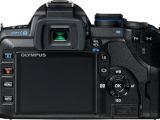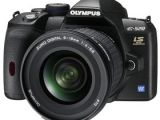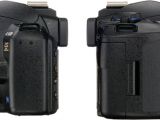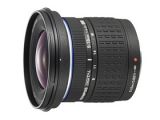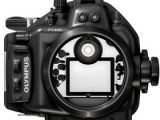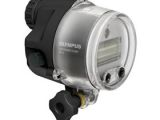Olympus has refreshed today their DSLR lineup by introducing the new E-520, which is basically the "old" E-510 with some improvements and a new, appealing and affordable Zuiko Digital ED 9-18mm f/4.0-5.6 ultra-wide angle lens.
The new digital single lens reflex camera now offers some of the features found in the E-420 and E-3. Probably, the most important of them is the improved Live View mode with contrast AF that does not require lifting the mirror. This will probably appeal to those who switch from bridge or point and shoot cameras.
Other non-DSLR classic features that are incorporated into the E-520 include the face detection technology, which detects up to 8 faces at a time and automatically adjusts focus to ensure that everyone's faces are accurately focused. In addition, the "Face & Back Control" makes the necessary adjustments to improve the exposure for faces in the foreground and the scenery in the background.
Wireless flash fans might also appreciate the E-520's ability to command the FL-50R and/or FL-36R with the built-in one. According to the press release, settings (including flash mode and intensity) for up to 3 groups of remote flashes can be adjusted on the LCD panel on the back of the camera.
Other noteworthy upgrades include the 2.7-inch HyperCrystal II LCD monitor, faster 3.5 frames per second continuous speed and the AF mode with improved focus tracking, which was "borrowed" from the flagship E-3 model.
With the improvements out of the way, let's review the features that have not changed since the E-510. First of all, the imaging unit is the same 10-megapixel Live MOS sensor, which is shifted to compensate for unwanted camera movement. Also present is the already ubiquitous self-cleaning system that implies vibrating the sensor module at high speeds to get rid of the extraneous particles (also known as dust bunnies).
The unit uses the same 3-point TTL phase difference detection autofocus system, with a range of 0 to 19EV and manual or automatic selection. It's worth noting that in terms of manual focus, we are not dealing with a classic mechanical system, but a more bridge-like focus by wire type.
For exposure metering, the Olympus E-520 features the 49 area sensor with ESP (Electro Selective Pattern) for evaluative metering, along with center-weighted average and spot.
The E-520 will be available starting June 2008, but no pricing information has been provided by Olympus.
The second product on the company's to do list is the Zuiko Digital ED 9-18mm f/4.0-5.6, which stands as the widest lens in the Standard lineup. As a quick reminder, Olympus has three lineups in production: Standard, High-Grade and Super High-Grade. Up until now, the Standard lineup's widest end was 14mm (that produced a picture angle equivalent to 28mm in 35mm terms). Now, Olympus DSLR owners who are not willing to spend considerably large amounts of cash on the High Grade and Super High Grade lenses can go as wide as 9mm. Well, not quite 9mm, because the picture angle is equivalent to that of an 18mm lens mounted on a full-frame 35mm camera.
Some compromises have been made in order to make the lens affordable. Probably the most important is the variable, f/4.0-5.6 maximum aperture, which is closely followed by the absence of dedicated aspherical and low-dispersion elements. Instead, the lens uses what Olympus calls a Dual Super Aspherical or DSA. Our guess is that it's a cheap solution that is likely less effective than the aforementioned aspherical and low-dispersion elements. For comparison reasons, the Super High Grade Zuiko 7-14mm f/4.0 has 1 aspherical element, 1 ED element, 2 Super ED elements and 1 ED Glass Aspherical element.
Just like with the E-520, there's no information on pricing, but Olympus does mention that it will be available before the end of 2008 (at least we know for sure that it's due for release this year).
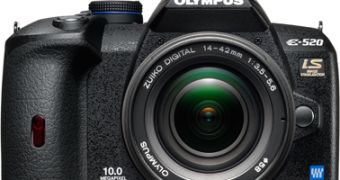
 14 DAY TRIAL //
14 DAY TRIAL // 
